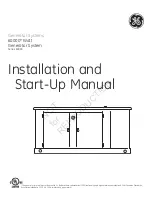
Connector Assignments
Manual • Doc.-No.: C.3030.21 / Rev. 1.4
CAN-CBX-AI420
Page 28 of 103
¹º »
¼
¹º »
½
¾¿
¹º »
À
¾Á
Â
¾ Ã ÃÄ
Å» ÆÇÈ ÉÊ Ë ÌÍ
¾ Ã ÃÄ
ÎÏ
Ð Ñ ½
Ð Ò½ ÓÐ
ÎÏ
Ð Ñ ½
Ð Ò½ ÓÐ
ÔÕ Ö
à ×
ÔÕ ÖÃ Ø
Ù ÚÛÜ
Ù ÕÖ
Ý Þß à
á Ùâ ã
ä
Ï
åäæ »ç
è ºÈ» ÆÇ
éÆ êè
ë
É êÈ æ» ì í
îï Ã Ã
Ýð ñòóô
ÁÞ ¾ õïö¾ ÷Ø ÂØ
øõ ù¾ ØÔÛ
Ýú
û
ü
ý
ØÙ ó þôý
Ô
öÙØÞð ÿ
ó
ô
ó
ÔÙ ø ÷
á
Û
ä
Ï
åäæ »ç
è ºÈ» ÆÇ
éÆ êè
ë
É êÈ æ» ì í
Ù ú ûú ô
ý þ
Õ
ð þ ýô ð
Õß ¾
ôðö
ð ü
üú ñ
ð ñð ÿ ô
ð
þ
þó
1þ óñô
ú ñýþ
Õð þý ôúð ÿ
!
"!
!#
$ %
&
' ( !
)( ' *
!
( ++,-
. /
0
* !
4.3 Analog Inputs
4.3.1 Analog Input Circuit
Fig. 12: Analog input circuit (example: channel 1)
Attention:
The internal circuit of the
23
-converter (see figure below) and the wiring of the sensor
signal cause a gain-error at the measuring. This fault is the smaller, the lower the
resistance of the sensor is chosen.
Furthermore the resistors of both measuring lines of the differential analog inputs should
be identical.
Fig. 13: Principle of the internal circuit of the
23
-converter
The gain-error increases with increasing resistance R
SOURCE
(see figure above).
















































